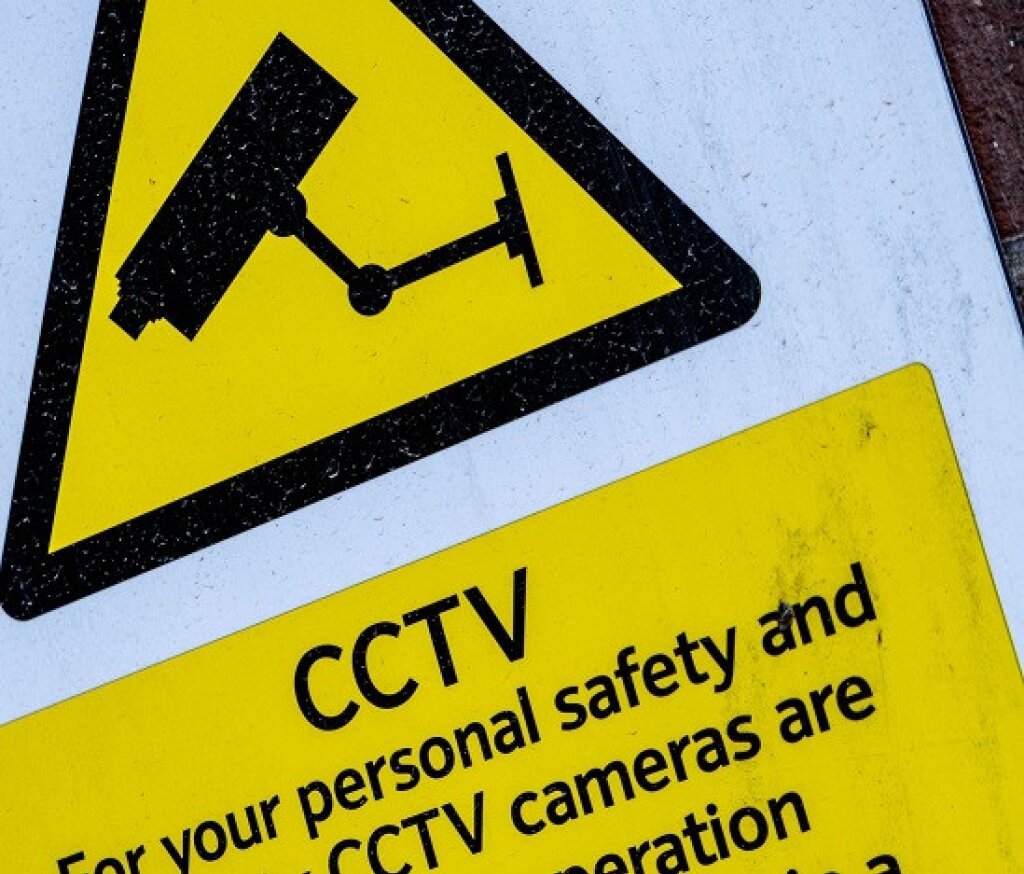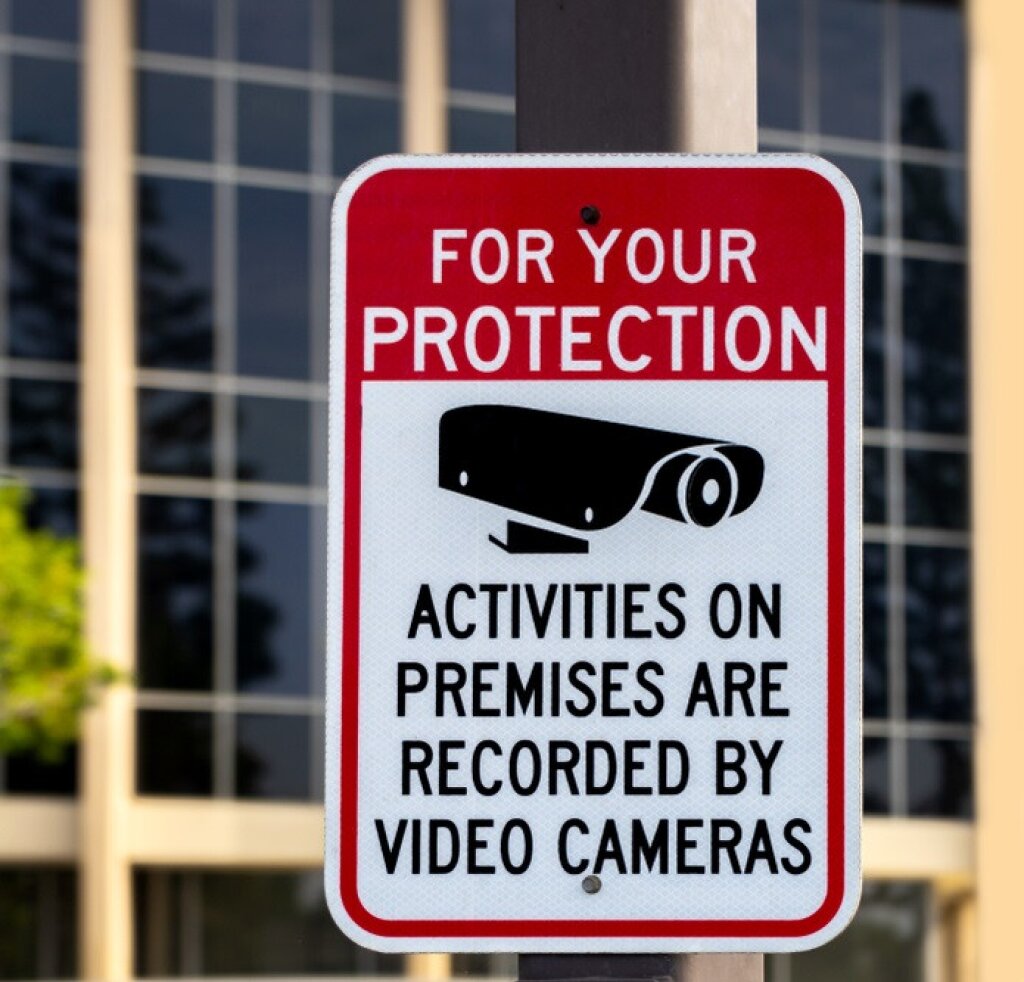CCTV Signage Requirements in the U.S. (2025): What You Need to Know for Legal, Ethical and Effective Surveillance
Thinking of installing security cameras on your property? Make sure your signage is more than just hanging on a wall. In 2025, proper CCTV signs are required for compliance, deterrence and trust.
As video surveillance becomes more common and widespread, so do the expectations around how it’s communicated to the public. Across the United States, displaying CCTV signage isn’t just a courtesy; in many cases it’s a legal requirement that protects both the camera operator and the people being monitored.
But where, when and what kind of sign to post isn’t always clear. Federal laws like the NDAA (National Defense Authorization Act) focus on security risks tied to foreign surveillance technology, while state regulations focus on privacy, consent and notice requirements. Plus, while some states have specific signage mandates, others rely on general principles of fair warning which makes it easy for property owners to overlook their obligations.
In this article, we look at the legal requirements across the U.S.A. for CCTV signage.

Why CCTV Signs Matter — Legally and Practically
Transparency builds trust. Signage is a visible acknowledgement that surveillance is taking place. It tells the public you’re not hiding your cameras or trying to monitor people secretly. Transparency matters not just legally — especially in employee-employer relationships or retail environments — but in terms of goodwill and avoiding disputes down the line.
From a practical perspective, signage deters crime before it starts. Studies have shown that potential intruders are less likely to target properties that advertise security monitoring. A simple sign can make the difference between an attempted break-in and a criminal deciding it’s not worth the risk.
Finally, signage supports legal defensibility. If someone claims their privacy was violated or disputes how footage was captured, the presence of clearly visible signs can strengthen your position. It shows you took reasonable steps to notify individuals that they were entering a monitored space.
Federal Oversight and Equipment Restrictions
While federal law doesn’t require signage, the government has set standards on what equipment can and can’t be used, especially in sensitive industries.
The NDAA restricts the use of surveillance systems from companies like Hikvision, Dahua and Huawei and cites national security concerns. Even if you’re not a federal contractor, using NDAA compliant equipment is a best practice for future-proofing your system and avoiding potential vulnerabilities.
State-by-State Variability: What to Look For
U.S. states have a lot of latitude in defining their own surveillance and privacy laws. This latitude means a patchwork of requirements that can change quickly. For example:
California and New York require conspicuous signage in any public or customer-facing areas under video surveillance.
Florida requires CCTV signs to be posted at all monitored entrances with clear language.
Texas may require the operator’s name and contact information on the sign.
Maryland and Massachusetts have strict rules around audio surveillance which often requires two-party consent.
These signage laws are not static. Businesses must stay on top of legal updates, especially if they operate in multiple states.

Signage Best Practices: What to Include and Where to Post Signs
Your CCTV signage should be more than just a warning; it should be clear, professional and legally sound. Make sure it includes:
A statement such as “24-Hour Video Surveillance” or “Security Cameras in Use”
Contact details if required by your state or industry
A short privacy notice (e.g. “For safety and crime prevention purposes”)
Legibility at a distance using high-contrast colors and clean fonts
Sign placement matters. Post signs near main entrances, gates, parking lots or anywhere someone might enter the monitored zone.
Signs should be at eye level and well-lit. If you’re monitoring multiple entrances, post signs at each one. Avoid aggressive language and balance professionalism with clarity.
A Note on Ethics and Public Trust
Surveillance systems are powerful tools but they’re also easy to misuse, sometimes unintentionally. By placing your cameras in the right areas (never in private spaces like restrooms or employee changing rooms), and ensuring that your signage is visible and honest, you help maintain the balance between safety and personal privacy.
Also, don’t post fake signs without cameras. While not always illegal, it can be misleading and may backfire if a false sense of security leads to real harm, or if someone challenges your integrity.
In some jurisdictions misrepresentation can carry legal consequences.
Final Thoughts on CCTV Signage
CCTV signage in the U.S. is about more than just checking a box. It’s a legal safeguard, a crime deterrent and a visible commitment to ethical surveillance practices.
Whether you’re managing a warehouse, running a retail shop or securing your home, being proactive with signage helps with compliance, safety and public trust.
2025 and beyond. Surveillance laws change and data privacy is under the microscope. Being informed is no longer optional; it’s mandatory.
FAQs: Security Camera Signage Requirements in the U.S. (2025)
Q1: Am I required to post signs if I have security cameras on my property?
In many cases, yes, especially for businesses or public-facing properties.
While there is no blanket federal law mandating signage for all surveillance, many state laws and local ordinances require that you clearly inform people when they are being monitored. In particular:
Commercial properties often must post signs at entrances and monitored areas.
Workplaces may be required to notify employees of any monitoring.
Residential homeowners are not always required to post signs, but doing so is considered a best practice, especially when outdoor cameras face public walkways or a neighboring property.
Bottom line: If your cameras monitor areas where people have a reasonable expectation of privacy or public access, signs help ensure you're compliant and transparent.
Q2: What should a CCTV sign include to meet legal standards?
Effective and legally sound signage should contain clear, unambiguous language that informs individuals they are under video surveillance. Depending on your state or industry, signs may also need to include specific details. A compliant CCTV sign typically includes:
A statement like “24-Hour Video Surveillance”
The purpose of monitoring (e.g., “For security and safety”)
Contact information for the property owner or surveillance operator (required in states like Texas)
Any applicable privacy or legal disclaimers based on local rules
Keep language professional and non-threatening and avoid aggressive wording like “You’re Being Watched” unless clearly permitted.
Q3: Where should I place security camera signs for maximum legal and deterrent effect?
To meet compliance and maximize visibility:
Post signs at all entry points to the monitored area (doors, gates, parking lots)
Place signage at eye level in well-lit areas
Use multiple signs if the property is large or has several access routes
For businesses, place additional signage near point-of-sale areas, loading docks, employee entrances, and restricted zones
If you're monitoring indoor spaces like hallways, lobbies or customer service areas, interior signage may also be necessary. Avoid hidden signs or fine print; signage must be noticeable and understandable at a glance.
Q4: Are there specific signage rules for businesses vs. homeowners?
Yes. Businesses are generally held to stricter standards when it comes to surveillance signage. For example:
Many states require businesses to notify employees about monitoring.
Commercial properties open to the public must often have visible, legible signage at entrances.
Certain industries — such as healthcare, financial services or education — may face additional signage requirements tied to data privacy laws (e.g., HIPAA, FERPA).
For homeowners, signage is usually optional, but recommended. Placing a sign at your front gate, porch or driveway provides legal cover, strengthens deterrence, and avoids potential privacy concerns from neighbors or visitors.
Q5: What are the risks of not using signage with a surveillance system?
Failing to post proper signage can expose you to legal and reputational risks, including:
Privacy complaints or lawsuits from individuals unaware they were being recorded
Regulatory violations, especially for businesses or employers in states with strict notification laws
Disputes over recorded footage, where a lack of signage could weaken your legal standing
Reduced deterrence, as visible signs often discourage criminal activity more effectively than hidden cameras alone
In short, signage is not just about legal compliance, it's a proactive tool that builds trust, transparency and security.
Q6: Can I put up signs if I don’t actually have cameras installed?
Technically, yes, but with caution.
Posting CCTV signs without actual cameras isn’t illegal in most places, but it can be misleading. If someone relies on the presence of surveillance (for example, in a workplace or rental property) and later finds out it was a bluff, this could damage credibility or even lead to liability claims in some jurisdictions.
In some states, false signage could be considered deceptive, especially if the sign falsely claims live monitoring, audio recording or law enforcement affiliation.
If you're using signage purely as a deterrent, make sure it’s not overly specific or misleading, and consider pairing it with at least a basic camera setup.
Learn about how to share video footage compliantly using redaction (data masking) software.



